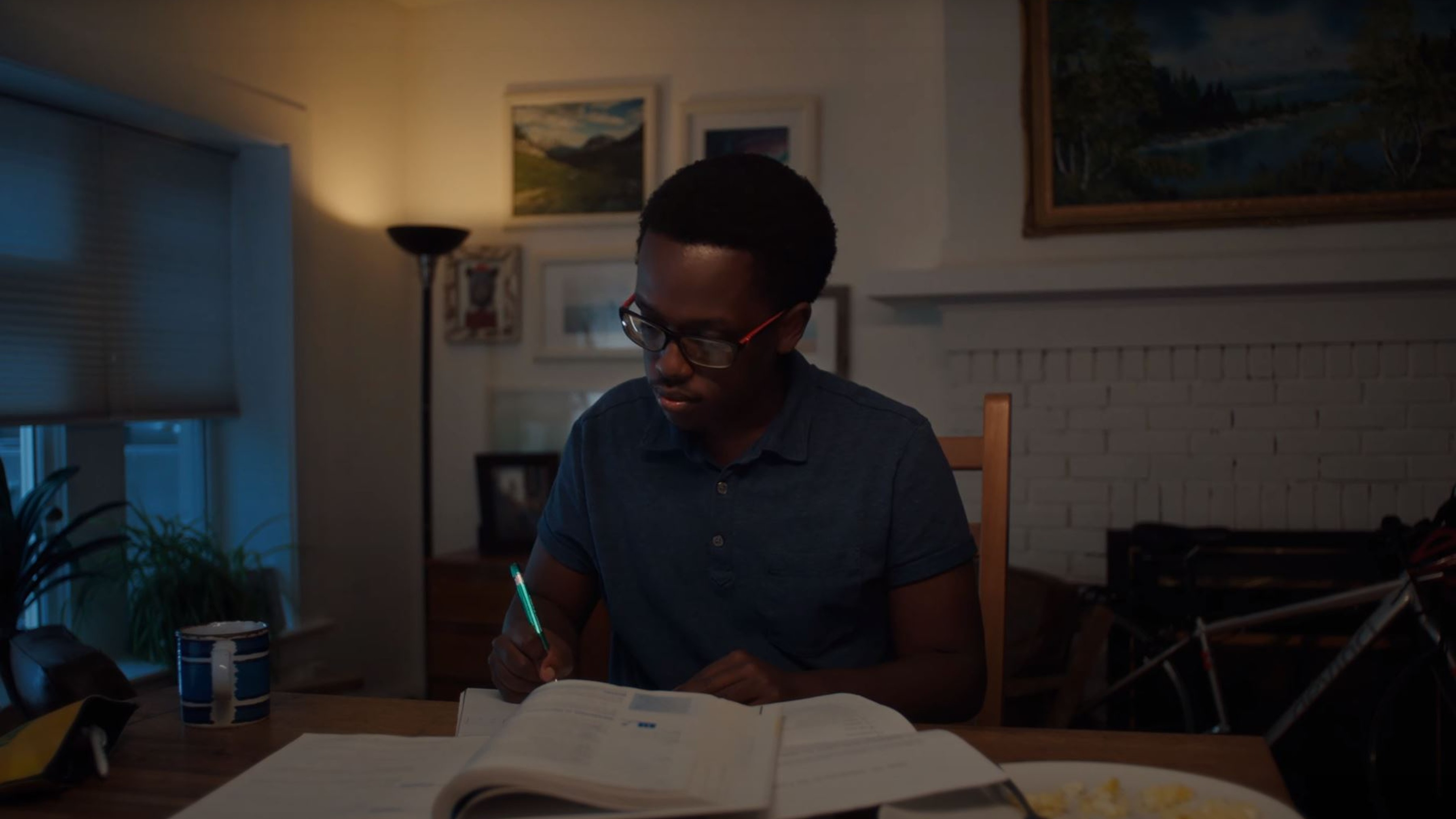Arnold Gihozo, ’21 BSc, has his nose to paper amidst a table full of textbooks in the University of Alberta’s new brand story video, Leading with Purpose. The computing science student says he chose the field for his love of technology, but stayed because he saw how many disciplines were connected by computers and understood the potential to make positive change.
But as you watch him write, pencil in hand, you might be wondering what a computing science student is working on without a computer. He says there’s more to his craft than just coding.
“There’s a bit of thinking about how you want the end user to experience what you are building,” says Gihozo. “How do you want people to feel when they are using your software? I have to put myself in other people’s shoes.”
He’s a good fit for this role, since he served his fellow students as president of the Augustana Students’ Association and led them through the pains of learning and connecting during a global pandemic. Now that he’s graduated, Gihozo is taking big steps to ensure everyone can have a more inclusive and encouraging experience online.
Is creating more inclusivity online the part of your work that you find most fulfilling?
Yes, that and making change in my community. I’m passionate about helping my community become better, whether that’s through student leadership or my day job. That’s what keeps me pushing — to work with companies and people that have the same mindset and say, ‘We see a problem in our society that we want to change, and we can use technology to get to that point.’ Through computing and software engineering, you are the driving force working towards that change.
So, who are you working with right now? What kind of projects are you doing?
Since graduation, I’ve been working for a tech company called Areto Labs as their lead software engineer. We focus on machine learning and natural language processing to analyze people’s language online to identify toxicities, like hate speech, discrimination and hurtful sentiments. Our technology is built to improve our social media platforms by detecting toxic comments and automatically posting a positive response.
One of the other things that really attracted me to this company was their awareness of microaggressions. We often talk about these subtle and indirect discriminatory behaviours or comments, but we don’t have a solution to deal with, or even recognize, them. It has been really fun to develop programs that can recognize microaggressions and help create an atmosphere that is more inclusive. Leading a passionate engineering team on innovative projects makes it a great place to work.
It’s amazing to hear about your important work. What does it mean to you to be an innovator?
Innovation is being able to see an issue within society and say, ‘I am going to make something different out of this, we’re going to change the discourse, and we’re going to do it for better inclusion and improvement for everyone.’ Innovation is not just about research, it’s about making something better outside the constraints that we find ourselves in.
That’s a beautiful way to frame innovation. Were there experiences or people at the university that helped you find that perspective?
I see it kind of like a mosaic. Every single person I meet gives me a really good piece that then builds my perspective. My parents taught me to care for others. They are very community-driven in everything that they do, here in Canada and back at home in Rwanda. My professors at Augustana, especially Rosanna Heise, helped me shape my understanding of engineering — that it’s not just about coding but understanding the person you are coding for. And in my experiences across the different campuses, Campus Saint-Jean, North Campus and Augustana, there were times that I felt a bit excluded, whether in the social norms or in relationships. So, once I got to a place where I felt included, I better understood the importance of inclusion within our communities.
You appear in the U of A brand story video. What was it like?
It was my first time seeing a real production crew. When we filmed the video, I think it was midday. It was very bright outside. But when you see it now, because of the way they used the lighting, it looks very early in the morning. It was interesting to see how many lights were pointed at me and then the final product. The director told me that to get less light in the video, you actually have to use more lights while filming.
I felt very honoured to be a part of representing what the U of A is and what it stands for. It's not often that we get to be a part of such a cool experience.
